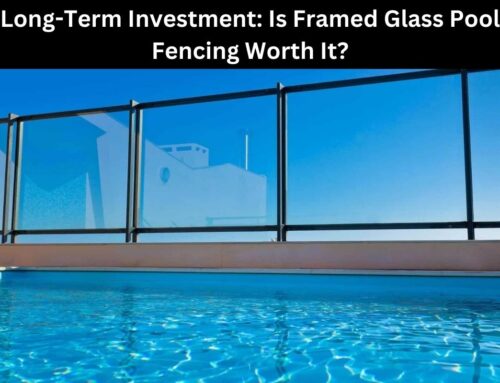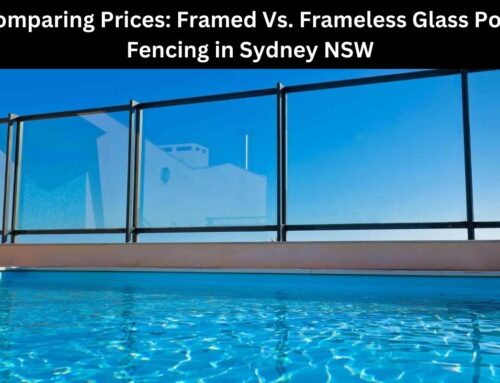Table of Contents
In a world filled with uncertainties, safety has become a paramount concern for individuals and organizations alike. While technological advancements have led to the development of sophisticated safety features, it is often overlooked that the quality of materials used plays a pivotal role in enhancing these features. The importance of high-quality materials in enhancing safety features cannot be emphasized enough.
When it comes to safety, durability is key. High-quality materials not only withstand the test of time but also provide the necessary strength and resilience to withstand potential hazards. Fire-resistant materials, in particular, offer invaluable benefits by preventing the rapid spread of flames and minimizing the risk of injury or property damage.
Moreover, high-quality materials contribute significantly to the overall structural integrity of safety features, ensuring their effectiveness in protecting lives and property.
Proper material selection is a critical aspect of safety enhancement. By employing technical, precise, and analytical approaches, the right materials can be identified and incorporated into safety measures, thereby maximizing their effectiveness.
In conclusion, the importance of high-quality materials in enhancing safety features cannot be overstated, as they are the foundation upon which reliable and robust safety measures are built.

Key Takeaways
- High-quality materials are essential for enhancing safety features in various industries, including automotive and construction.
- Durability is a key factor in safety materials as it ensures their effectiveness over time, reduces the need for frequent replacements, and improves reliability.
- Fire-resistant materials play a vital role in preventing the rapid spread of flames and protecting against high temperatures, thereby enhancing fire safety in structures.
- Proper material selection is critical for safety enhancement as it prioritizes safety over cost, improves structural integrity, and provides occupants with a secure environment.
Understanding the Role of Materials in Safety Enhancement
The understanding of the role of materials in safety enhancement is crucial for improving the overall safety features of various products and applications.
Materials play a significant role in enhancing safety by providing the necessary strength, durability, and resistance to external forces.
For instance, in the automotive industry, the use of high-quality materials such as advanced high-strength steel or aluminum alloys is essential to enhance the crashworthiness of vehicles. These materials have superior mechanical properties that can absorb and dissipate energy during an impact, reducing the risk of injuries to occupants.
Similarly, in the construction industry, the selection of appropriate materials for critical components like structural beams or fire-resistant coatings is vital to ensure the safety of buildings. By using materials with specific properties, such as high tensile strength or fire retardancy, the structural integrity and fire resistance of buildings can be significantly improved.
Overall, the proper understanding and utilization of materials in safety enhancement can greatly contribute to the prevention of accidents and the protection of human lives.
Moving forward, it is important to recognize the importance of durability in safety materials to further enhance safety features.
The Importance of Durability in Safety Materials
Durability in safety materials is akin to a sturdy shield that safeguards against potential harm. When it comes to enhancing safety features, the importance of durability cannot be overstated. Here are five key reasons why durability is crucial in safety materials:
- Resistance to wear and tear: Safety materials that are durable can withstand repeated use and exposure to harsh conditions without losing their effectiveness. This ensures that they can continue to provide protection over an extended period of time.
- Increased lifespan: Durability extends the lifespan of safety materials, reducing the need for frequent replacements. This not only saves costs but also minimizes the risk of using compromised materials that may fail to provide adequate protection.
- Enhanced reliability: Durable safety materials are less likely to fail or break under stress. This instills confidence in users, knowing that the materials will reliably perform their intended function when needed.
- Improved performance in extreme conditions: Durability is particularly important in safety materials that are exposed to extreme temperatures, pressures, or environmental conditions. Materials that can withstand these extremes enhance safety by maintaining their integrity and functionality.
- Long-term cost-effectiveness: Investing in durable safety materials may require a higher upfront cost, but it pays off in the long run. The reduced need for replacements and repairs translates to cost savings over time.
Exploring fire-resistant materials and their benefits, it is essential to consider their durability alongside their ability to withstand high temperatures and prevent the spread of flames.
Exploring Fire-Resistant Materials and their Benefits
Fire-resistant materials play a crucial role in preventing the spread of flames and protecting against high temperatures. These materials are designed to withstand extreme heat and reduce the risk of fire-related injuries and property damage.
One commonly used fire-resistant material is fire-resistant glass, which is specially treated to withstand high temperatures and prevent the spread of fire. Fire-resistant glass is often used in buildings and vehicles to provide a barrier between flames and occupants, allowing for a safe evacuation and minimizing the potential for injury.
Another important fire-resistant material is fire-resistant insulation, which is used to protect the structural integrity of buildings and prevent the spread of fire through walls and ceilings. Fire-resistant insulation is typically made from non-combustible materials such as mineral wool or fiberglass, which can withstand high temperatures and prevent the spread of flames.
In addition to these specific materials, fire-resistant coatings and paints can also be applied to surfaces to enhance their fire resistance.
Overall, the use of fire-resistant materials is essential in ensuring the safety of individuals and minimizing the damage caused by fires. These materials provide a vital barrier against flames and high temperatures, reducing the risk of injuries and property loss.
Moving forward, it is important to consider the impact of high-quality materials on the structural integrity of buildings and the overall effectiveness of safety features.
The Impact of High-Quality Materials on Structural Integrity
By incorporating high-performing materials into the framework, the structural integrity of buildings can be likened to the sturdy roots of a towering tree, providing a solid foundation that withstands the test of time and external forces. High-quality materials play a crucial role in enhancing the structural integrity of buildings, ensuring their long-term stability and safety.
These materials possess superior strength, durability, and resistance to various environmental factors, such as extreme temperatures, moisture, and seismic events. They are specifically designed to withstand the forces exerted on buildings and maintain their structural integrity even under challenging conditions.
One key aspect of high-quality materials is their ability to distribute loads evenly throughout the structure. This prevents localized stress concentrations, which can lead to structural failures. Additionally, these materials exhibit excellent resistance to deformation, minimizing the risk of deformations that could compromise the stability of the building.
Moreover, high-quality materials often have enhanced fire resistance properties, further contributing to the structural integrity of buildings. They can withstand high temperatures for extended periods, providing additional time for evacuation and fire suppression efforts.
The incorporation of high-quality materials is crucial for ensuring the structural integrity and safety of buildings. These materials offer superior strength, durability, and resistance to various environmental factors.
In the next section, we will discuss how proper material selection enhances safety measures, emphasizing the importance of choosing materials that prioritize safety over cost.
How Proper Material Selection Enhances Safety Measures
Proper selection of materials plays a pivotal role in fortifying safety measures in construction projects. The choice of materials directly affects the overall effectiveness of safety features implemented in a structure. By using high-quality materials, safety can be significantly enhanced, ensuring the well-being of occupants and minimizing the risk of accidents or structural failures.
- Durability: High-quality materials are more resistant to wear and tear, ensuring that safety features remain intact and effective over time. This longevity reduces the need for frequent repairs or replacements, minimizing potential hazards.
- Strength and stability: Materials with superior strength and stability provide a solid foundation for safety measures. They can withstand external forces, such as earthquakes or extreme weather conditions, reducing the likelihood of structural failure and ensuring the integrity of safety features.
- Fire resistance: High-quality materials often possess better fire resistance properties. This significantly improves the fire safety of a structure, allowing occupants more time to evacuate safely in the event of a fire.
By carefully considering the properties of materials and selecting those that meet stringent safety requirements, construction professionals can enhance the overall safety measures of a project. The use of high-quality materials not only increases the durability and strength of structures but also enhances fire safety, providing occupants with a secure environment.
The Majestic Blend: Safety and Elegance in Semi-Frameless Pool Fencing
Find the perfect blend of safety and elegance with Majestic Glass’ semi-frameless glass pool fencing services in Sydney. Combining the sleek aesthetics of frameless designs with the durability of traditional frames, our semi-frameless glass pool fencing solutions offer an ideal blend of style and security. With our use of high-grade glass, we ensure both durability and a pleasing aesthetic. Visit our main services page to learn more about our commitment to quality and the unique benefits of choosing a Majestic Glass semi-frameless pool fence.
Frequently Asked Questions on Importance of High-Quality Materials in Enhancing Safety Features
What are some common materials used in safety features?
Common materials used in safety features include reinforced steel for structural integrity, impact-absorbing materials like foam and airbags for cushioning, and fire-resistant materials to prevent combustion. These materials ensure optimum safety and protect individuals from potential risks.
How do different materials affect the overall durability of safety equipment?
Different materials have varying levels of durability, which affects the overall performance of safety equipment. By using high-quality materials, safety features can withstand harsh conditions, resist wear and tear, and provide long-lasting protection for individuals.
Are there any specific fire-resistant materials that are commonly used?
Commonly used fire-resistant materials in safety equipment include flame-retardant fabrics like Nomex and Kevlar, as well as fire-resistant coatings such as intumescent paints. These materials are designed to reduce the risk of ignition and slow down the spread of fire.
Can you provide examples of how high-quality materials have improved structural integrity in safety devices?
The use of high-quality materials has greatly improved the structural integrity of safety devices. For example, the incorporation of advanced alloys in car frames has enhanced crash resistance, reducing the risk of injury to occupants.
What factors should be considered when selecting materials for safety measures?
Factors to consider when selecting materials for safety measures include strength, durability, resistance to impact and corrosion, thermal properties, and cost-effectiveness. These factors are crucial in ensuring the effectiveness and reliability of safety devices.
Conclusion
In conclusion, the significance of using high-quality materials in enhancing safety features cannot be overstated.
By understanding the role of materials in safety enhancement, we can appreciate the importance of durability and the benefits of fire-resistant materials.
Moreover, the impact of high-quality materials on structural integrity is undeniable.
Through proper material selection, safety measures can be greatly enhanced, ensuring the protection and well-being of individuals.
Therefore, it is imperative to prioritize the use of high-quality materials to achieve optimal safety outcomes.
Related Articles





